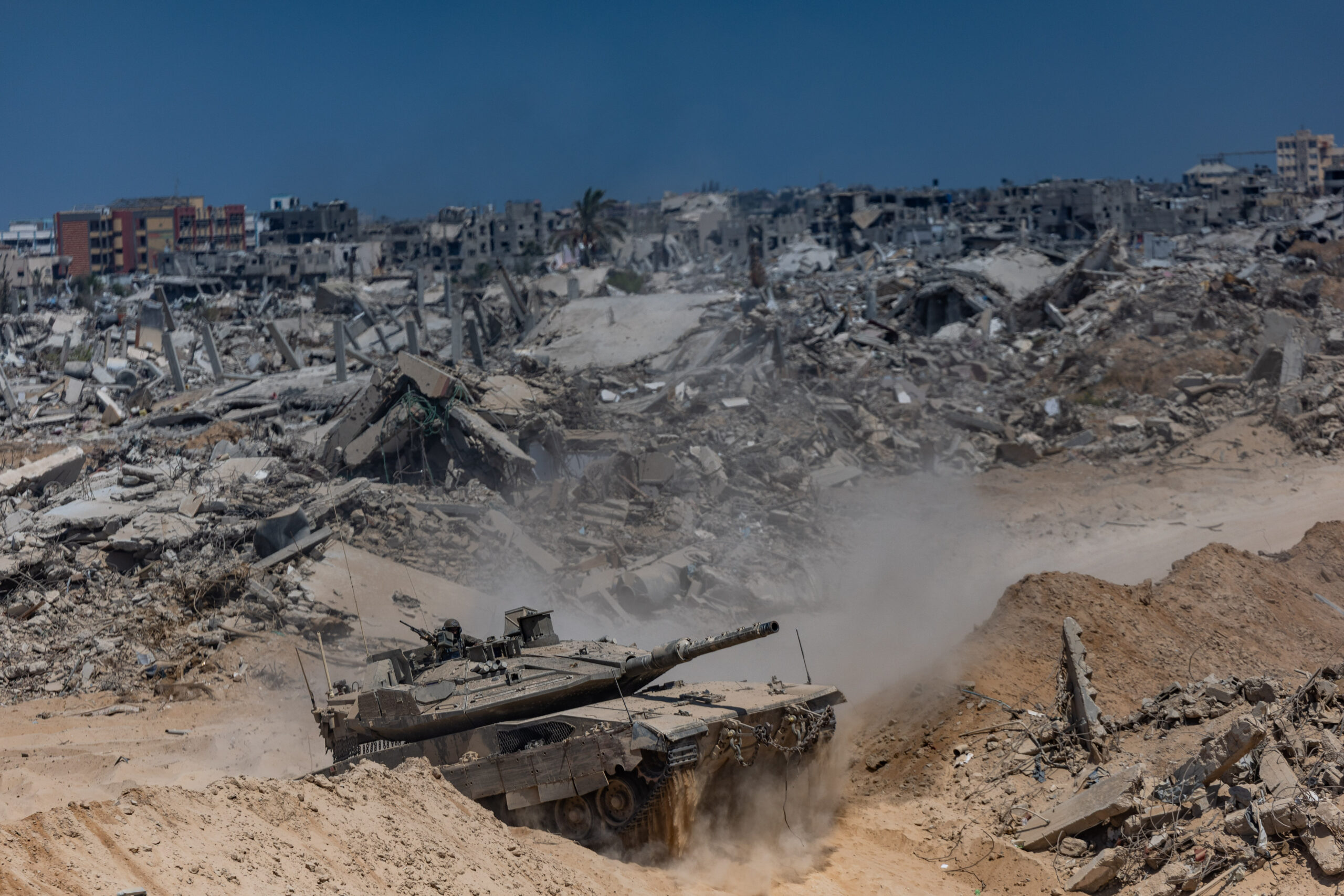Israeli forces operating in southern Gaza came under coordinated Hamas attack on Sunday, marking the most serious challenge yet to a week-old ceasefire that was meant to bring calm to the embattled territory.
The Israel Defense Forces reported that terrorists fired anti-tank missiles and conducted shooting attacks, including rocket-propelled grenades and sniper fire, against soldiers working to destroy terror infrastructure in the Rafah area. The attacks prompted an immediate Israeli military response, with fighter jets conducting airstrikes and artillery units opening fire to neutralize the threat. Israeli Navy vessels also engaged targets along the Rafah coastline.
“Earlier today, terrorists fired anti-tank missiles and carried out shooting attacks toward IDF forces, which were operating to destroy terror infrastructure in the Rafah area in accordance with the terms of the agreement,” the IDF said in a statement.
Unconfirmed reports claim IDF troops were wounded in the attacks.
The severity of the incident prompted Prime Minister Benjamin Netanyahu and Defense Minister Israel Katz to leave their weekly Cabinet meeting for an urgent security assessment with military leadership. During the same Cabinet session, the government approved renaming the ongoing campaign the “War of Revival.”
Sunday’s violence follows the first major ceasefire breach reported just two days earlier, when armed Hamas terrorists emerged from underground tunnels and opened fire on Israeli troops in separate incidents in Khan Younis and Rafah. Several of the attackers were killed in retaliatory Israeli airstrikes.
The fragile ceasefire, which took effect just over a week ago, was accompanied by an Israeli withdrawal from approximately half of the Gaza Strip. However, Israeli security officials report that roughly 7,000 Hamas operatives have exploited this partial withdrawal to redeploy throughout Gaza, reasserting control over neighborhoods and towns as civilians return to their homes.
For now, Israeli officials say there are no plans to resume the large-scale ground operations that characterized the conflict before the ceasefire. However, the mounting violations have raised serious questions about the durability of the agreement.
Hamas has rejected Israeli accusations, with spokesman Izat al-Rishq claiming that “Hamas remains committed to the ceasefire agreement, while Israel continues to violate it and seeks false excuses to justify its crimes.” He attributed Netanyahu’s actions to pressure from far-right coalition partners seeking to escape responsibility before international mediators.
Yet Hamas’s own actions have called this commitment into question. Since the ceasefire began, the terror organization has killed at least 32 Gazans in what Israeli officials describe as a systematic campaign of violence targeting anti-Hamas clans that emerged during the conflict.
The United States State Department issued a stark warning on Saturday night, claiming “credible reports” indicating “an imminent ceasefire violation by Hamas against the people of Gaza.” The department warned that any such attack “would constitute a direct and grave violation of the ceasefire agreement.”
Hamas dismissed the American warning on Sunday morning as propaganda “fully aligned with Israel’s misleading” narrative—a rejection that came just hours before the attacks on Israeli forces materialized.
The current ceasefire represents the latest chapter in a conflict that has claimed thousands of lives and devastated Gaza’s infrastructure. The war began with Hamas’s brutal October 7, 2023, massacre, in which the terror organization invaded southern Israel, killing approximately 1,200 people—mostly civilians—and taking over 240 hostages back to Gaza in what became the deadliest day for Jews since the Holocaust.
Israel launched Operation Swords of Iron in response, vowing to dismantle Hamas’s military capabilities and secure the return of all hostages. The ensuing military campaign has focused on destroying the extensive tunnel network Hamas built beneath Gaza over nearly two decades of rule, as well as eliminating the organization’s military leadership and fighting forces.
Throughout the conflict, Israel has maintained that its operations target Hamas terrorists and infrastructure while taking measures to minimize civilian casualties—a task complicated by Hamas’s documented practice of embedding military assets in civilian areas, including schools, hospitals, and residential buildings.
The international community has pressed for ceasefires throughout the conflict, with varying degrees of success. Hamas has typically used previous temporary truces to rearm and reposition forces, leading Israeli military planners to approach any pause in fighting with caution.
This is a developing story and will be updated as more information becomes available.




